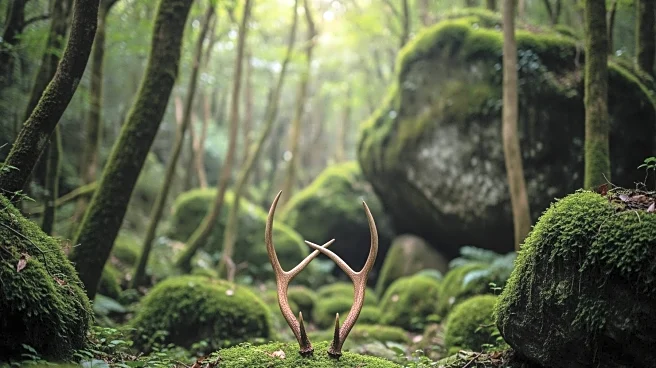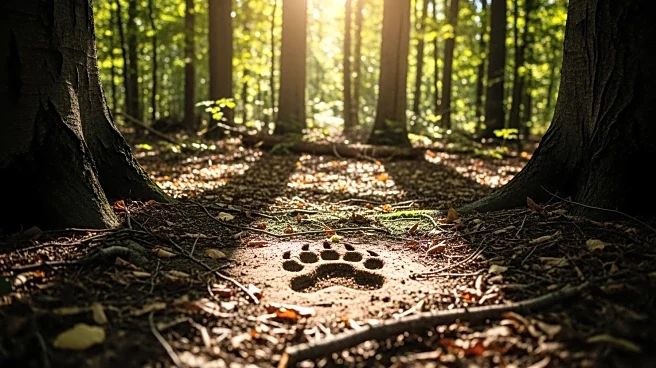What's Happening?
A recent study has revealed a significant increase in mitochondrial DNA diversity among the Yaku sika deer population on Yakushima Island, Japan. The research indicates that the deer population has recovered
from a historical bottleneck event caused by the Koya pyroclastic flow approximately 7,300 years ago. The study utilized mitochondrial DNA analysis to demonstrate that the deer population has undergone genetic diversification, with distinct genetic structures forming in different areas of the island. The findings suggest that the deer have adapted to the unique environmental conditions of Yakushima, which has led to the development of genetically distinct subpopulations.
Why It's Important?
The study's findings are crucial for conservation efforts, as they highlight the importance of understanding genetic diversity and population structure in managing wildlife populations. The recovery of genetic diversity in the Yaku sika deer population suggests that similar processes may occur in other species that have experienced population bottlenecks. This research provides valuable insights into the resilience of wildlife populations and the potential for recovery following environmental disturbances. The identification of genetically distinct subpopulations also underscores the need for targeted conservation strategies to preserve the unique genetic makeup of these deer.
What's Next?
The study suggests that the genetically distinct subpopulations of Yaku sika deer should be treated as independent conservation management units. This approach will help in developing effective long-term monitoring and conservation strategies. Further research, including nuclear DNA analyses, is needed to fully understand the genetic diversity and population dynamics of the deer on Yakushima Island. These efforts will contribute to the preservation of the island's unique biodiversity and inform conservation practices for other species facing similar challenges.
Beyond the Headlines
The study of the Yaku sika deer population on Yakushima Island offers insights into the broader implications of genetic diversity and population recovery in wildlife conservation. The research highlights the role of environmental factors, such as the absence of predators and unique habitat conditions, in shaping genetic diversity. It also emphasizes the importance of considering historical events, like the Koya pyroclastic flow, in understanding current population structures. These findings can inform conservation strategies for other species and ecosystems affected by environmental changes and human activities.













